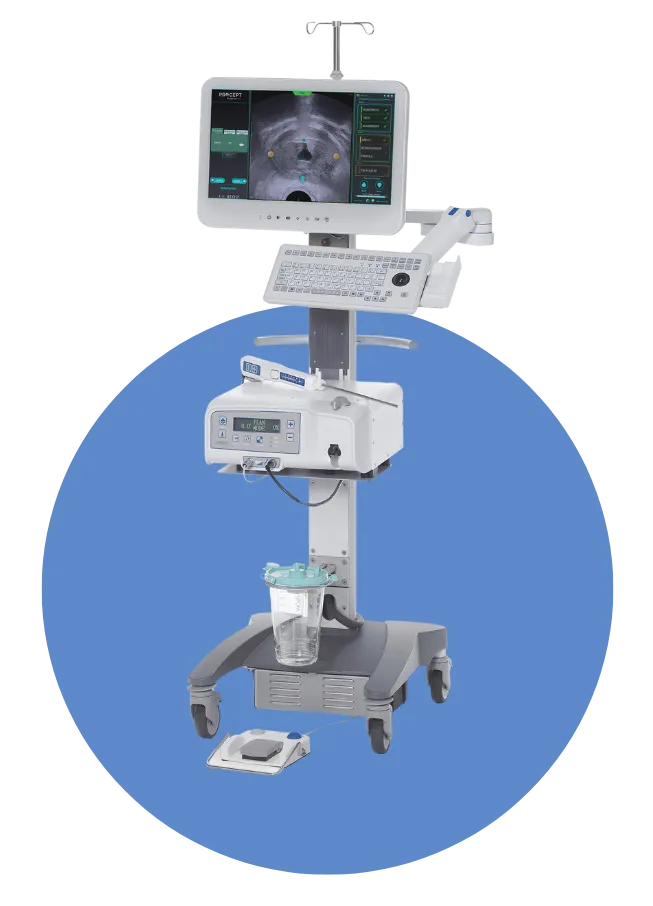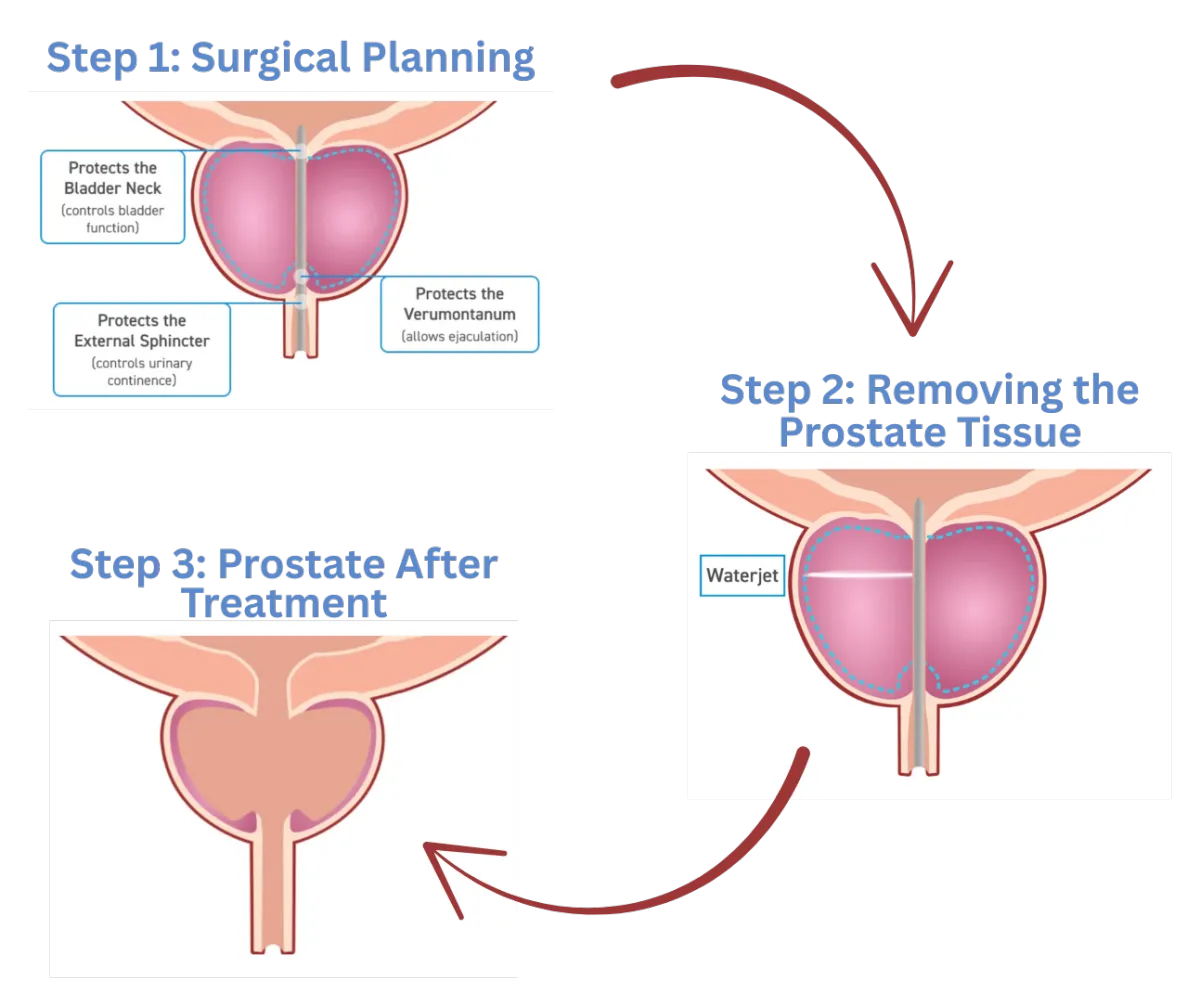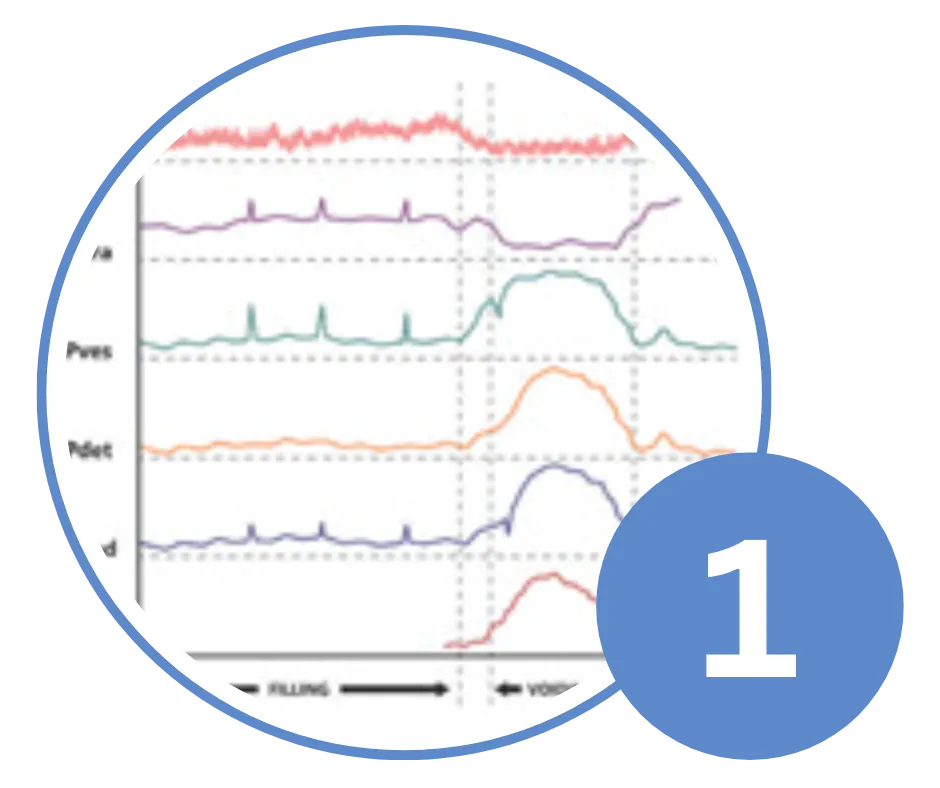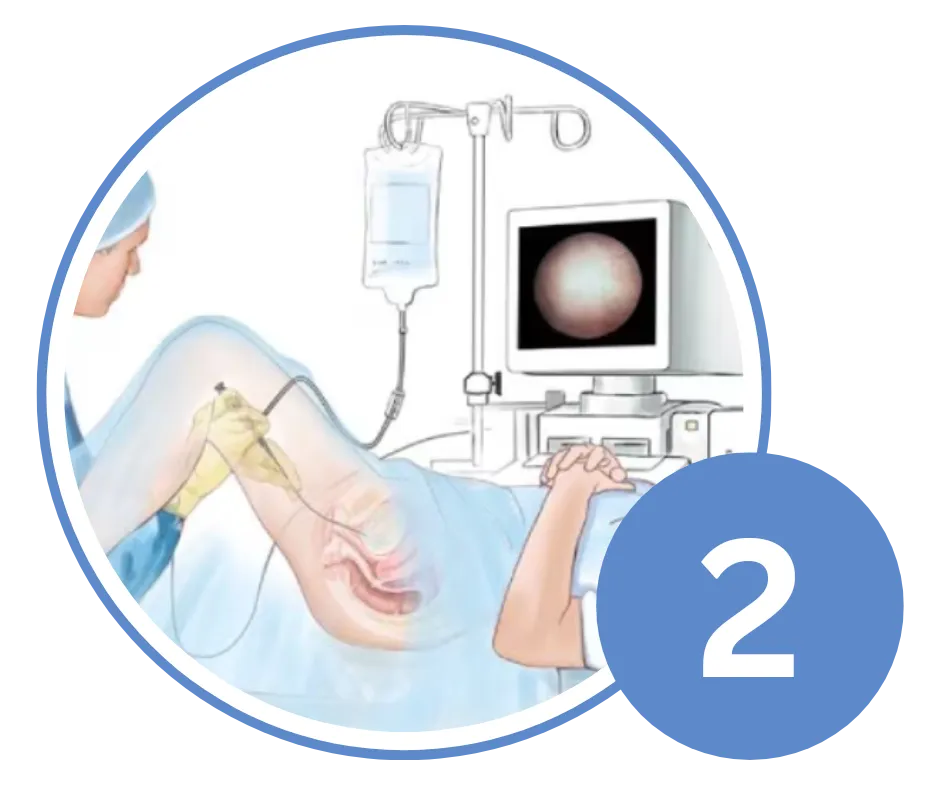
COULD AQUABLATION THERAPY BE RIGHT FOR YOU?
Aquablation therapy offers a minimally invasive, effective solution for lower urinary tract symptoms (LUTS) caused by BPH. Using robotic precision, Aquablation therapy delivers lasting results with a low risk of complications, empowering you to live confidently on your terms.

COULD AQUABLATION THERAPY BE RIGHT FOR YOU?
Aquablation therapy offers a minimally invasive, effective solution for lower urinary tract symptoms (LUTS) caused by BPH. Using robotic precision, Aquablation therapy delivers lasting results with a low risk of complications, empowering you to live confidently on your terms.

99%
MEN PRESERVED
CONTINENCE
100%
MEN PRESERVED
ERECTIONS
89%
MEN PRESERVED
EJACULATION
99%
MEN PRESERVED
CONTINENCE
100%
MEN PRESERVED
ERECTIONS
89%
MEN PRESERVED
EJACULATION
HOW DOES AQUABLATION THERAPY WORK?

STEP 1: SURGICAL PLANNING
With the help of ultrasound imaging, doctors can create a detailed guide to plan the procedure. This guide outlines the specific areas of the prostate that need removal. The tissue within the marked area of the prostate may be removed, while the tissue outside of it may remain untouched.
STEP 2: REMOVING THE PROSTATE TISSUE
Next, a robotic-assisted system follows the surgical plan and resects the targeted prostate tissue using a heat-free waterjet. This advanced technology helps ensure precise, consistent, and predictable removal of the tissue.
STEP 3: PROSTATE AFTER TREATMENT
After the procedure, urine flows normally from the bladder, passing through the treated prostate, and exits the body.
Patient experience at Cleveland Clinic
Dennis Bentley, M.D. and Brian Canterbury, MD, spearheaded efforts at Cleveland Clinic to integrate Aquablation into clinical practice. To date, they have collectively performed water jet ablation on more than 200 BPH patients.
Water jet ablation has been available at Cleveland Clinic since early 2023, and a growing number of patients continue to benefit from the procedure. Given the positive outcomes to date, there are plans to expand its use and availability across the network.
FREQUENTLY ASKED QUESTIONS
What is Aquablation Therapy?
Aquablation therapy is a one-of-a-kind procedure. It is the only procedure that uses a heat-free waterjet controlled by robotic-assisted technology to remove problematic prostate tissue and combines a camera (called a cystoscope) with ultrasound imaging, giving the surgeon the ability to see the entire prostate in real time. As a result, Aquablation therapy is precise, consistent, and delivers predictable outcomes and long-term relief no matter how large your prostate is. Aquablation therapy also has a low rate of irreversible complications, such as incontinence, ejaculatory dysfunction, and erectile dysfunction.
Who is a candidate for Aquablation Therapy?
Aquablation therapy has been proven as a safe and effective treatment for patients suffering from lower urinary tract symptoms due to benign prostatic hyperplasia. Aquablation therapy can be performed on prostates of any size. Dr. Canterbury or Dr. Bentley will evaluate if you are an appropriate candidate for Aquablation therapy.
What are the risks?
The most common side effects are mild and temporary. These may include mild pain, bleeding or strain while urinating, discomfort in the pelvis, inability to empty the bladder, a frequent and/or urgent need to urinate, and bladder or urinary tract infection. Other risks include, but are not limited to, ejaculatory dysfunction and a low risk of injury to the urethra or rectum. Speak with your urologist about the potential side effects and risks associated with Aquablation therapy.
What is recovery like after Aquablation Therapy?
As with most benign prostatic hyperplasia procedures, you will wake up with a catheter following Aquablation therapy, which allows you to urinate while your urethra heals. The procedure may involve an overnight stay in the hospital. The benefit with Aquablation therapy is that most patients end up leaving the hospital without a catheter. Once you’re home, the most common side effects you may experience are mild burning during urination for a couple of weeks. This can be managed with mild pain medication. Patients can resume their normal activities once approved by their doctor. Please refer to the discharge instructions provided by your surgeon.
Where can I get more information about Aquablation Therapy?
You can visit https://aquablation.com/ for more information or schedule an appointment to speak with Dr. Canterbury or Dr. Bentley to learn if Aquablation Therapy is right for you.
WHAT TO EXPECT...

Urodynamics
Testing
Urodynamics Testing
You will first see a nurse who will run urodynamics testing to evaluate how your bladder and urethra function in storing and releasing urine.

Cystoscopy
Procedure
Cystoscopy Procedure
Later that day, you will see Dr. Bentley or Dr. Canterbury for a Cystoscopy, which enables him to view the lower urinary tract to look for problems in the urethra and bladder.

Transrectal Ultrasound (TRUS)
After the cystoscopy, the same physician will perform a transrectal ultrasound to capture images of the prostate gland and surrounding tissue.

Aquablation Conference
Once all the testing and imaging is complete, the physician will sit down with you for a conference about Aquablation Therapy and whether it is the right next step for your healthcare needs.

Schedule
Aquablation
Schedule Aquablation
Once you decide to proceed with Aquablation Therapy you will schedule your procedure with Dr. Canterbury or Dr. Bentley's scheduler.
READY TO GET STARTED?
Complete the form below so that we can gather some information and a member of our team will contact you shortly to get you scheduled.

Aquablation Inquiry Form (Demo)
HIPAA Notice:
Please keep in mind that communications via email over the internet are not secure. Although it is unlikely, there is a possibility that information you include in an email / online form can be intercepted and read by other parties besides the person to whom it is addressed. Please do not include personal identifying information such as your birth date, or personal medical information on this form. No one can diagnose your condition from email or other written communications, and communication via our website cannot replace the relationship you have with a healthcare practitioner.
Web Design, Hosting & Digital Marketing Services
Lisa Canterbury
(330)636-9975
Aquablation Inquiry Form (Demo)
HIPAA Notice:
Please keep in mind that communications via email over the internet are not secure. Although it is unlikely, there is a possibility that information you include in an email / online form can be intercepted and read by other parties besides the person to whom it is addressed. Please do not include personal identifying information such as your birth date, or personal medical information on this form. No one can diagnose your condition from email or other written communications, and communication via our website cannot replace the relationship you have with a healthcare practitioner.
Web Design, Hosting & Digital Marketing Services
Lisa Canterbury
(330)636-9975
